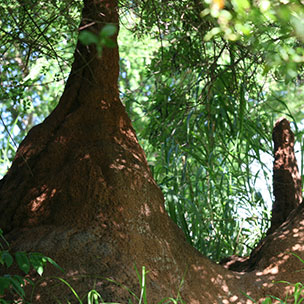February 7, 2015 — What do termites have to do with climate change? Potentially a lot, according to research recently published in Science (subscription required to read the full text of the study). Through their excavations, termites actually change the composition of soil in the African savanna. The tunnels the termites create hold water better and the insects will add clay or sand to soil depending on whether its too loose or stiff, turning their mounds into “nutrient islands” where both vegetation and other animals thrive better than in the surrounding land. Even in times of low rainfall the researchers show that termite mounds keep vegetation while vegetation around the mounds decreases. And when rains return, the termite homes help bring vegetation back to the entire area. This means “that the termite mounds are an insurance policy against climate change, protecting the vegetation on them from water scarcity,” writes Science senior correspondent Elizabeth Pennisi about the research. The research suggests that if land with termite mounds is turned into farmland the resiliency the mounds offer could be lost as well, making it much easier for the landscape to become degraded for good. ![]()
Photo by Cliff (Flickr | Creative Commons)
Ensia shares solutions-focused stories free of charge through our online magazine and partner media. That means audiences around the world have ready access to stories that can — and do — help them shape a better future. If you value our work, please show your support today.
Yes, I'll support Ensia!

